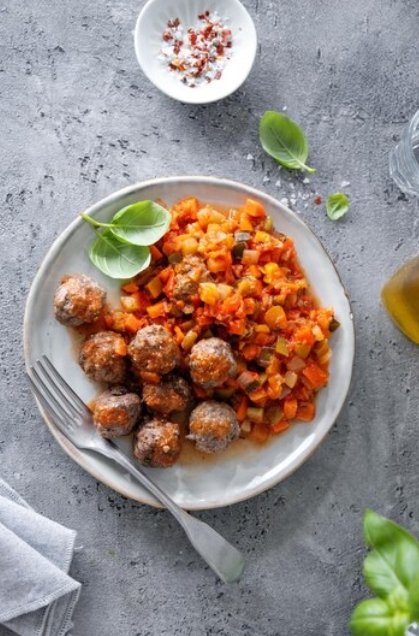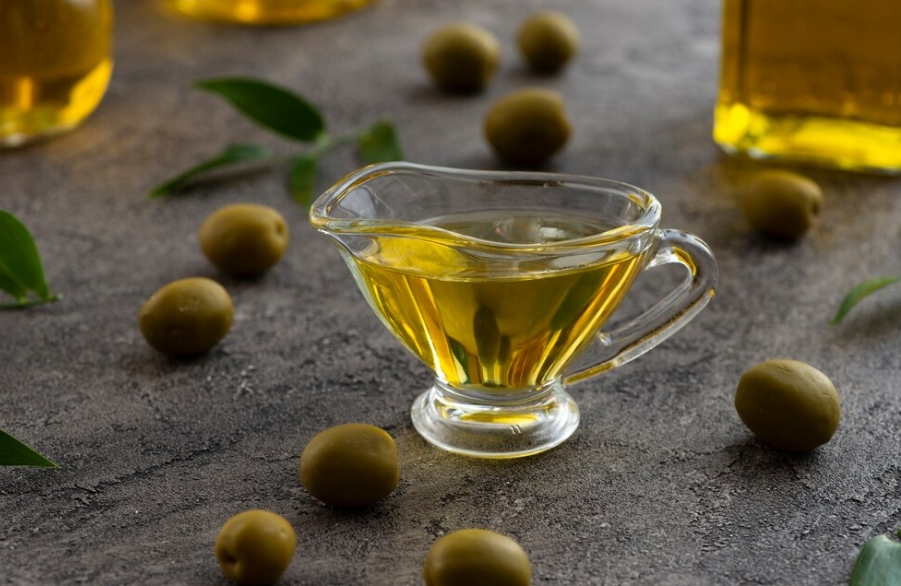Moroccan Harissa Meatballs are a prime example of the robust and aromatic flavors of North African cuisine. Flavored with a range of warming spices, these meatballs are elevated by the smoky and gently spicy harissa tomato sauce. Because each bite offers a delightful balance of richness and spice, it is an excellent comfort dish for cold evenings or exuberant get-togethers.
What Does This Recipe Teach You?
This recipe will teach you how to properly season and shape meatballs while also producing a deeply flavored harissa tomato sauce. Numerous more foods can be prepared using these methods.
What Makes This Recipe My Favorite?
I love how this meal transforms simple ingredients into a burst of flavor. Tender meatballs and smokey harissa sauce make for a posh yet approachable combination.
What’s the Best Way to Store Leftovers?
The meatballs and sauce can be kept in the fridge for up to three days in an airtight container. Reheat in the microwave or on the stovetop over low heat.
What to Serve With It?
For a full supper, serve Moroccan Harissa Meatballs with warm flatbread, fluffy couscous, or roasted veggies on the side.
Moroccan Harissa Meatballs
Description
The combination of strong spices and hearty tastes in Moroccan Harissa Meatballs is delicious. Tender, juicy meatballs are cooked in a spicy tomato sauce with harissa after being seasoned with a mixture of cumin, coriander, and paprika. This meal, which goes well with fluffy couscous, crusty bread, or a crisp salad, brings the rich, fragrant flavor of Moroccan cuisine to your table.
For the Meatballs:
For the Harissa Tomato Sauce:
Instructions
Prepare the Meatballs:
-
- In a large mixing bowl, combine ground meat, onion, garlic, spices, egg, breadcrumbs, parsley, salt, and pepper. Mix well until evenly combined.
- Shape the mixture into small meatballs, about 1-inch in diameter, and set aside.
Cook the Meatballs:
-
- Heat a large skillet over medium heat and add a drizzle of olive oil.
- Brown the meatballs in batches, turning occasionally, until golden on all sides (about 6–8 minutes). Remove and set aside.
Prepare the Harissa Tomato Sauce:
-
- In the same skillet, heat olive oil and sauté onion and garlic until softened.
- Stir in harissa paste, cumin, paprika, and cinnamon, cooking until fragrant (about 1 minute).
- Add crushed tomatoes and broth, stirring to combine.
- Season with salt and pepper to taste.
Simmer the Meatballs:
-
- Gently add the browned meatballs back into the skillet, ensuring they are coated in the sauce.
- Cover and simmer over low heat for 15–20 minutes, allowing the flavors to meld and the meatballs to cook through.
Serve:
-
- Garnish with fresh parsley and serve hot with couscous, rice, or flatbread.
Nutrition Facts
Servings 4
- Amount Per Serving
- Calories 350kcal
- % Daily Value *
- Total Fat 22g34%
- Total Carbohydrate 15g5%
- Dietary Fiber 3g12%
- Protein 22g44%
* Percent Daily Values are based on a 2,000 calorie diet. Your daily value may be higher or lower depending on your calorie needs.
Note
- You can adjust the heat level of the harissa sauce to your preference by adding more or less harissa paste.
- For a lighter option, substitute ground turkey or chicken for the meat.
Journey of Moroccan Harissa Meatballs
Harissa from Morocco More than just a meal, meatballs offer a glimpse into Morocco's rich culinary history. Every morsel of these meatballs tells a story of history, flavor, and inventiveness, from the bustling spice markets of Marrakech to the fragrant restaurants of Fez. We must examine this cuisine's gastronomic, cultural, and historical roots in order to truly appreciate it.
Historical Context
Kefta, or meatballs, have been a staple of North African cooking for many years. The idea of forming minced meat into balls was initially employed by the Berbers, who are indigenous to North Africa. Traditionally prepared with lamb or beef, kefta was spiced with regional ingredients to represent the region's wealth and commercial connections. Morocco's spice repertory expanded along with trade routes, incorporating exotic ingredients like paprika, cumin, and cinnamon.
The main component of the sauce, harissa, has Tunisian origins. Originally developed to preserve chili peppers, it is a fiery mixture of roasted red peppers, garlic, and spices. Throughout the ages, harissa gained popularity as a condiment across North Africa and as a characteristic of Moroccan cooking.
The Moroccan approach to flavor is best represented by the combination of kefta with harissa sauce, which is rich, aromatic, and incredibly satisfying. This dish, which is usually made over low heat in a tagine, has come to represent communal dining and the gathering of people around a common meal.
The key ingredient is harissa.
These meatballs have a distinctly Moroccan flavor thanks to the harissa sauce. Harissa is a cultural artifact rather than merely a spice blend. The dish is elevated to a symphony of flavors by its potent, smokey heat, which balances the earthiness of cumin, the sweetness of paprika, and the warmth of cinnamon.
Making harissa is a kind of art in and of itself. Many families have cherished recipes that have been handed down through the years. While some varieties have a sweeter, smokier profile, others are hotter. Moroccan Harissa Meatballs' well-balanced harissa complements the meatballs without overpowering their subtle flavors.
Modern Appeal
Harissa meatballs from Morocco are being served on foreign restaurants. They are well-liked by both professional chefs and household cooks due to their versatility. You may serve them over regular couscous, with spaghetti for a Mediterranean flair, or with crusty toast for a rustic flavor. Additionally, this recipe fits well with the current trends of comfort food and powerful flavors. Now that harissa is more readily accessible in supermarkets throughout the world, customers may enjoy Moroccan cuisine in the comfort of their own homes. It illustrates how food can unite people and span cultural gaps.
Fun Facts
- UNESCO has classified Harissa as part of Tunisia's intangible cultural heritage.
- Moroccan cuisine is often regarded as one of the most balanced in the world, thanks to its harmonic combination of spices and fresh ingredients.
- The tagine, a traditional Moroccan cooking bowl, is specifically designed to retain moisture and enhance flavors—a method ideal for meals like these meatballs.
A Poetic Ode
Picture the initial bite: the tender meatballs melting in your mouth while their spices danced across your tongue. The slightly sweet and smoky harissa tomato sauce envelops every bite like a cozy hug. It's a trip to a faraway place where every meal is an occasion to celebrate community, flavor, and life.
A Recipe for Any Occasion
Moroccan Harissa Meatballs are not just a dish; they are an experience. Whether they are served at a festive party or a laid-back family dinner, they have the power to bring people together. The process of shaping the meatballs, simmering the sauce, and savoring the final product is as fulfilling as the flavors.
A Final Remark
Thank you for joining me on this culinary adventure into the heart of Moroccan cuisine. These meatballs are more than just a dish; they're a tradition, a story, and a testament to the strength of simple ingredients and seasonings. I hope this recipe inspires you to create your own priceless tableside experiences by experimenting with flavors and spices. Good morning, or Bessaha wa raha as it is known in Morocco! (Well-being and rest!)







